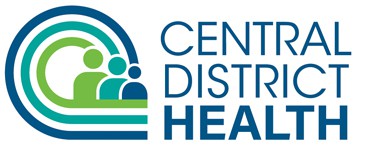Summary
Health authorities in China continue to investigate an outbreak of novel coronavirus (2019-nCoV) infections associated with a large seafood and animal market in Wuhan City, Hubei Province, China which started in December 2019. There are now growing indications that limited person-to-person spread is happening, it is unclear how easily this virus is transmissible between humans. Confirmed cases of 2019 nCoV have occurred in Thailand, Japan, The Republic of Korea, and the United States in travelers who returned from Wuhan City and did not report visiting the market. On 1/17/2020, screening of travelers from Wuhan City began at major US airports.
Recommendations for Healthcare Providers
- Obtain detailed travel history on patients with fever and acute respiratory illness.
- Report “patients under investigation” (PUI) for 2019-nCoV infection (see below) to Central District Health (208-327-8625) or the Bureau of Communicable Disease Prevention (208-334-5939) immediately.
Criteria for a PUI in association with the outbreak of 2019-nCoV in Wuhan City, China are:
- Fever 1 AND symptoms of lower respiratory illness (e.g., cough, shortness of breath)
- and in the last 14 days before symptom onset,
- History of travel from Wuhan City, China
- Close contact 2 with a person who is under investigation for 2019-nCOV while that person was ill
- and in the last 14 days before symptom onset,
- Fever 1 OR symptoms of lower re
- and in the last 14 days before symptom onset,
- Close contact 2 with an ill laboratory-confirmed 2019-nCoV patient.
- and in the last 14 days before symptom onset,
- Fever 1 AND symptoms of lower respiratory illness (e.g., cough, shortness of breath)
- Notify infection control personnel in your healthcare facility immediately if you identify a PUI for 2019-nCoV.
- Collect specimens for 2019-nCoV testing.
Collect lower respiratory, upper respiratory, and serum specimens as soon as possible once a PUI is identified regardless when symptoms began. Additional specimen types (e.g., stool, urine) may be collected and stored. Submit specimens to the Idaho Bureau of Laboratories (IBL) for 2019-nCoV testing at the Centers for Disease Control and Prevention. Do not wait for results on testing for other respiratory pathogens. Contact IBL at 208-334-2235 before submitting specimens. Contact IBL or see https://www.cdc.gov/coronavirus/2019-ncov/. Clinical laboratories should not attempt virus isolation in cell culture or initial characterization of viral agents recovered in cultures of specimens from a PUI for 2019-nCoV. - Take precautions.
PUI should wear a surgical mask as soon as they are identified. Evaluate PUI in a private room with the door closed, ideally an airborne infection isolation room. Healthcare personnel entering the room should use standard precautions, contact precautions, airborne precautions, and use eye protection (e.g., goggles or a face shield). See https://www.cdc.gov/coronavirus/2019- nCoV/infection-control.html for infection prevention and control updates.
See https://www.cdc.gov/coronavirus/2019-ncov/index.html for more information as the situation evolves.
Footnotes
1Fever may not be present in some patients, such as those who are very young, elderly, immunosuppressed, or taking certain fever-lowering medications. Clinical judgment should be used to guide testing of patients in such situations.
2 Data to inform the definition of close contact are limited. Close contact with a PUI for 2019-nCOV is defined as—
a) being within approximately 6 feet (2 meters), or within the room or care area, of a novel coronavirus case for a prolonged period of time while not wearing recommended personal protective equipment or PPE (e.g., gowns, gloves, NIOSH-certified disposable N95 respirator, eye protection); close contact can include caring for, living with, visiting, or sharing a healthcare waiting area or room with a novel coronavirus case.
– or –
b) having direct contact with infectious secretions of a novel coronavirus case (e.g., being coughed on) while not wearing recommended personal protective equipment.
Considerations when assessing close contact include the duration of exposure (e.g., longer exposure time likely increases exposure risk) and the clinical symptoms of the person with novel coronavirus (e.g., coughing likely increases exposure risk as does exposure to a severely ill patient). Special consideration should be given to those exposed in healthcare settings.

